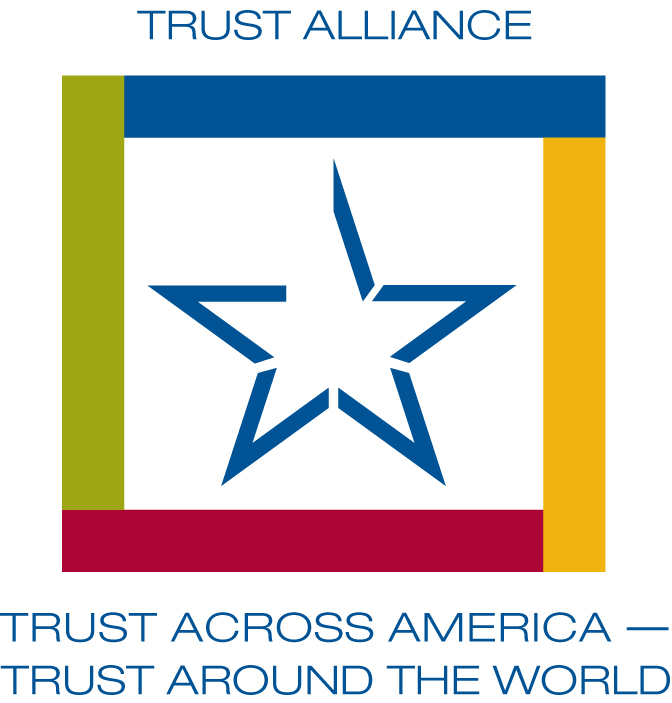Archive
Archive for September, 2020
 Do you work on a team where both leaders and colleagues hide their true intentions?
Do you work on a team where both leaders and colleagues hide their true intentions?
The outcome of hidden agendas is distrust and inertia, as goals become guesswork and the fear of making a mistake increases.
Last week, as part of our Zoom Lunch & Learn members of our Trust Alliance convened to discuss the topic of team trust, transparency & hidden agendas. We addressed four questions during the hour:
- How do you define the role of transparency in the context of a team? (We define it as follows: We reject hidden agendas. We are transparent wherever and whenever possible.)
- What causes hidden agendas?
- How can transparency be elevated within a team?
- Why is transparency frequently cited as the main cause of low trust, even though it is not?
What did our Trust Alliance members have to say about Question #3? How can transparency be elevated within a team?
The following were some of the key take aways:
- Both leadership and team transparency “rules” must be clear with no ambiguity.
- Lack of rules around transparency creates a lack of respect, often leading to either acquiescence or a challenge to decision making.
- Heightened transparency keeps team members more honest, efficient, innovative and collaborative.
- Have a policy of openness (not to be confused with transparency.) Always share as much as you can.
- Avoid lumping other trust busting behaviors into the transparency category. Know how to identify them and address them separately.
- Uncomfortable conversations are okay. People are resilient and able to absorb negative news.
- Elevating interpersonal skills like listening enhances transparency.
- Complaints and their resolutions should be shared with employees.
- Cowardice in some industries allows leaders to hide behind regulations as an excuse for lack of transparency.
- Addressing transparency issues in family businesses requires a different skill set.
A final comment:
While courageous and empowered cultures have fewer transparency challenges, transparency alone won’t get a team to the trust “finish line.” In fact, transparency is only 1 of 12 behaviors that elevate trust in teams and organizations. And in the many organizations we have surveyed, transparency is not the #1 cause of low trust. To find out what is, spend 1 minute answering this question and see the results from over 500 respondents.
___________________
__________________
Thank you to Bart Alexander, David Belden, Natalie Doyle Oldfield, Charlie Green, Nadine Hack, Olivia Mathijsen and Bob Whipple for your insights. Until next time!
Copyright 2020, Next Decade, Inc.
Barbara Brooks Kimmel, barbara kimmel, culture, leadership, organizational trust
 This post is written for my leadership, ethics and Board advisor friends on LinkedIn.
This post is written for my leadership, ethics and Board advisor friends on LinkedIn.
Maybe I’m naive or out of touch. What do you think of this offer?
When I was contacted last week about a position on an advisory board for a new executive education program at a well established university in NJ, the opportunity sounded promising. I would be joining leaders from organizations including Microsoft, Uber and Google, or so I was told in an introductory email. Yesterday I received more details in a phone conversation with the program manager. The call should have ended when the manager could not tell me how she received my name, but I decided to play along for a few more minutes. My one-year “seat” was contingent on two requirements:
- A commitment to three ninety-minute on-line evening calls throughout the year, during which Board members would listen to a presentation and give feedback.
- An agreement to complete the executive education curriculum itself (16 hours of online learning.) To clarify, I personally didn’t have to be the one to do that. Someone on my staff could be assigned the responsibility. It didn’t really matter as long as the FEE was paid. And what was that fee? For the general public, the program costs $4995 but as a Board member, the fee was discounted 80% to $980. Not only that, but anyone I signed up to complete the program would also be eligible for the same reduced rate.
I tried to stop choking on my coffee long enough to say that I would check with our Council members for some feedback. Before I had a chance to do that, and within 30 minutes, I received a followup email telling me I had been “approved” with a DocuSign term-sheet attached.
Well, I did a sanity check with one of my Council members who suggested I contact the university to discuss the ethics of their “pay to play” Board program. I may just do that. What would you do?
PS- Why the picture of the dog? I lost my buddy of 13 years on Monday. I’d like to think that the week can only get better from here. Let’s see what today brings.
Barbara Brooks Kimmel is the founder of Trust Across America-Trust Around the World, whose mission is to help organizations build trust. Now in its 12th year, the program has developed two proprietary trust-evaluation tools, the latest is AIM Towards Trust. She also runs the world largest global Trust Alliance and is the editor of the award-winning TRUST INC. book series. Kimmel is a former consultant to McKinsey who has worked across multiple industries and with senior leadership. She holds a bachelor’s in international affairs from Lafayette College and an MBA from Baruch.
Copyright © 2020, Next Decade, Inc.
Barbara Brooks Kimmel, Board of Directors, leadership, organizational trust, trustworthy behavior
 Do you work on a team where both leaders and colleagues hide their true intentions?
Do you work on a team where both leaders and colleagues hide their true intentions? 

Recent Comments